Squamata
Lizards and snakes
Kevin de Queiroz and Emilia P. Martins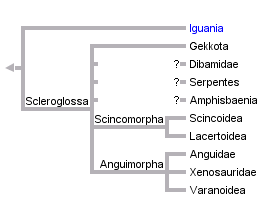


This tree diagram shows the relationships between several groups of organisms.
The root of the current tree connects the organisms featured in this tree to their containing group and the rest of the Tree of Life. The basal branching point in the tree represents the ancestor of the other groups in the tree. This ancestor diversified over time into several descendent subgroups, which are represented as internal nodes and terminal taxa to the right.

You can click on the root to travel down the Tree of Life all the way to the root of all Life, and you can click on the names of descendent subgroups to travel up the Tree of Life all the way to individual species.
For more information on ToL tree formatting, please see Interpreting the Tree or Classification. To learn more about phylogenetic trees, please visit our Phylogenetic Biology pages.
close boxReferences
Arnold, E. N. 1984. Variation in the cloacal and hemipenial muscles of lizards and its bearing on their relationships. Pages 47-85 in M. W. J. Ferguson, ed., The structure, development and evolution of reptiles, Academic Press, London.
Camp, C. L. 1923. Classification of the lizards. Bull. Am. Mus. Nat. Hist. 48:289-481.
Estes, R. 1983. Sauria terrestria, Amphisbaenia Vol. 10A. Handbuch der Paleoherpetologie (Encyclopedia of Paleoherpetology). Gustav Fisher Verlag, Stuttgart.
Estes, R., K. de Queiroz, and J. Gauthier. 1988. Phylogenetic relationships within Squamata. IN: Phylogenetic Relationships of the Lizard Families: Essays commemorating Charles L. Camp. (R. Estes and G. Pregill, eds.). Stanford University Press: Stanford, CA.
Etheridge, R. 1967. Lizard caudal vertebrae. Copeia 1967:699-721.
Jollie, M. T. 1960. The head skeleton of the lizard. Acta Zool. 41:1-64.
Julien, R., and S. Renous-Lecuru. 1972. Variations du trajet du nerf ulnaire (ulnaris) et de l'innervation des muscles dorsaux de la jambe chez les lacertiliens (reptiles, squamates): Valeur systematique et application phylogenetique. Bull. Mus. Natl. Hist. Nat. 23:207-245.
Kluge, A. G. 1989. Progress in squamate classification "Review of Phylogenetic relationships of the lizard families: Essays commemorating Charles L. Camp". Herpetologica 45(3):368-379.
Lecuru, S. 1968. Myologie et innervation du membre anterieur des lacertiliens. Mem. Mus. Nat. d'Hist. Nat. Zool. 48:127-215.
Lecuru, S. 1968. Remarques sur le scapulo-coraco de des lacertiliens. Ann. Sci. Nat. Zool. 10:475-510.
Lecuru, S. 1968. Etude des variations morphologiques du sternum, des clavicules et de l'interclavicule des lacertiliens. Ann. Sci. Nat. Zool. 10:511-544.
Malan, M. E. 1946. Contributions to the comparative anatomy of the nasal capsule and the organ of Jacobson of the Lacertilia. Ann. Univ. Stellenbosch 24:69-137.
McDowell, S. B., Jr., and C. M. Bogert. 1954. The systematic position of Lanthanotus and the affinities of the anguinomorphan lizards. Bull. Am. Mus. Nat. Hist. 105:1-142.
Northcutt, R. G. 1978. Forebrain and midbrain organization in lizards and its phylogenetic significance. Pages 11-64 in N. Greenberg and P. D. MacLean, eds., Behavior and neurology of lizards, U.S. Department of Health, Education, and Welfare, Rockville, Maryland.
Rage, J.-C. 1982. La phylogenie des lepidosauriens (Reptilia): Une approche cladistique. C. R. Acad. Sc. Paris 294:399-402.
Renous-Lecuru, S. 1973. Morphologie comparee du carpe chez lepidosauriens actuels (rhynchocephales, lacertiliens, amphisbeniens). Gegenbaurs morph. Jahrb., Leipzig 119:727-766.
Renous, S. 1980. Developpement de l'aspect historique de la biogeographie par la superposition de deux theses: Proposition d'une hypothese phylogenetique batie selon les principes Hennigiens et theorie de la derive des continents. C. R. Soc. Biogeogr. 57:81-102.
Rieppel, O. 1988. The classification of the Squamata. Pages 261-293 in M. J. Benton, ed., The phylogeny and classification of tetrapods, Volume 1: Amphibians, reptiles, birds, Clarendon Press, Oxford.
Russell, A. P. 1988. Limb muscles in relation to lizard systematics: A reappraisal. Pages 493-568 in R. Estes and G. Pregill, eds., Phylogenetic relationships of the lizard families. Essays commemorating Charles L. Camp Stanford University Press, Stanford, California.
Schwenk, K. 1988. Comparative morphology of the lepidosaur tongue and its relevance to squamate phylogeny. Pages 569-598 in R. Estes and G. Pregill, eds., Phylogenetic relationships of the lizard families. Essays commemorating Charles L. Camp. Stanford University Press, Stanford, California.
Sukhanov, S. B. 1976. Some problems of the phylogeny and systematics of Lacertilia. Smithson. Herpetol. Inf. Serv. (38):1-15.
Townsend, T. M., A. Larson, E. Louis, and J. R. Macey. 2004. Molecular phylogenetic of Squamata: The Position of Snakes, amphisbaenians, and dibamids, and the root of the squamate tree. Systematic Biology 53(3):735-757.
Underwood, G. L. 1971. A modern appreciation of Camp's "Classification of the lizards". Pages iii-xvii in Camp's classification of the lizards, Society for the Study of Amphibians and Reptiles.
Information on the Internet
- Assembling the Tree of Life: Deep Scaly. A large-scale, collaborative effort by eight investigators at seven institutions (one Australian and six U.S. institutions) to determine the evolutionary relationships among the major lineages of squamate reptiles.
Title Illustrations

| Scientific Name | Amblyrhynchus cristatus |
|---|---|
| Location | Post Office, Floreana, Galapagos Island, Ecuador |
| Specimen Condition | Live Specimen |
| Identified By | Manuel Mejia |
| Sex | Male |
| Image Use |
 This media file is licensed under the Creative Commons Attribution-NonCommercial License - Version 3.0. This media file is licensed under the Creative Commons Attribution-NonCommercial License - Version 3.0.
|
| Copyright |
© 2008 Manuel Mejia

|
About This Page
Kevin de Queiroz

Smithsonian National Museum of Natural History, Washington, D. C., USA
Emilia P. Martins

Indiana University, Bloomington, Indiana, USA
Correspondence regarding this page should be directed to Emilia P. Martins at
Page copyright © 1996 Kevin de Queiroz and Emilia P. Martins
 Page: Tree of Life
Squamata. Lizards and snakes.
Authored by
Kevin de Queiroz and Emilia P. Martins.
The TEXT of this page is licensed under the
Creative Commons Attribution-NonCommercial-ShareAlike License - Version 3.0. Note that images and other media
featured on this page are each governed by their own license, and they may or may not be available
for reuse. Click on an image or a media link to access the media data window, which provides the
relevant licensing information. For the general terms and conditions of ToL material reuse and
redistribution, please see the Tree of Life Copyright
Policies.
Page: Tree of Life
Squamata. Lizards and snakes.
Authored by
Kevin de Queiroz and Emilia P. Martins.
The TEXT of this page is licensed under the
Creative Commons Attribution-NonCommercial-ShareAlike License - Version 3.0. Note that images and other media
featured on this page are each governed by their own license, and they may or may not be available
for reuse. Click on an image or a media link to access the media data window, which provides the
relevant licensing information. For the general terms and conditions of ToL material reuse and
redistribution, please see the Tree of Life Copyright
Policies.
Citing this page:
de Queiroz, Kevin and Emilia P. Martins. 1996. Squamata. Lizards and snakes. Version 01 January 1996 (temporary). http://tolweb.org/Squamata/14933/1996.01.01 in The Tree of Life Web Project, http://tolweb.org/




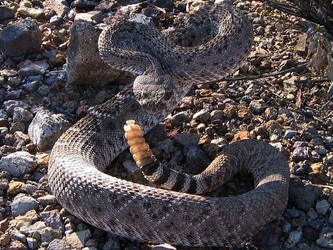
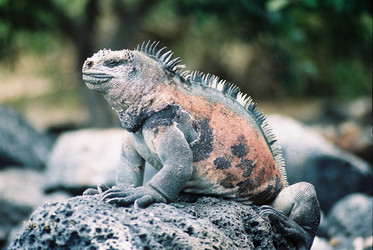
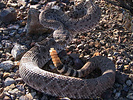
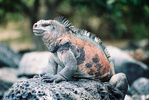

 Go to quick links
Go to quick search
Go to navigation for this section of the ToL site
Go to detailed links for the ToL site
Go to quick links
Go to quick search
Go to navigation for this section of the ToL site
Go to detailed links for the ToL site